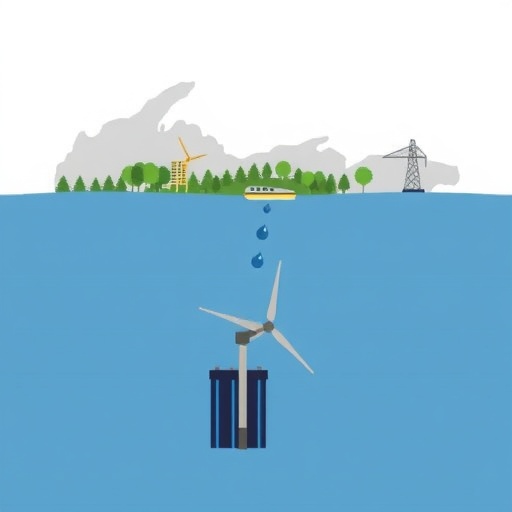As Lake Michigan’s water levels surged over the past decade, the coastal landscape has undergone dramatic transformations, prompting widespread efforts to combat shoreline erosion. These protective interventions, known as shoreline armoring, involve installing synthetic structures such as seawalls, revetments, and groins designed to mitigate the destructive forces of waves and rising waters. A recent study from Michigan State University sheds critical light on the scale of this phenomenon and raises pressing questions about its long-term environmental impacts.
Between 2014 and 2021, Lake Michigan experienced significant fluctuations in water levels, with 2020 marking a peak year. This prolonged period of elevated water levels intensified wave energy along the coast and accelerated erosion processes via persistent beach, dune, and bluff degradation. In response, property owners and local communities increased their reliance on hard infrastructure to defend against ongoing losses of coastal land and property damage, driving a stark rise in shoreline armoring.
Assistant Professor Ethan Theuerkauf, a coastal geomorphologist at Michigan State University’s Department of Geography, Environment, and Spatial Sciences, undertook a comprehensive assessment of these changes along Michigan’s nearly 370-mile stretch of Lake Michigan coastline. By leveraging a suite of coastal imagery and geospatial data from NOAA and Google Earth Pro, Theuerkauf meticulously quantified the extent of constructed shoreline defenses before and after the onset of the high-water period.
The results of this large-scale mapping effort reveal a dramatic fivefold increase in shoreline armoring within just seven years. Specifically, armored shoreline length skyrocketed from approximately 23,000 meters (about 15 miles) in 2014 to more than 111,000 meters (nearly 69 miles) by 2021. This expansion translated from an armored coast representing merely 4% of the shoreline to an impactful 19%, signaling a profound alteration in the natural coastal dynamics.
Different sections of the lakefront exhibited varying armoring intensities. The southern region experienced an astonishing 351% increase, likely reflecting both its developed urban interface and acute vulnerability during peak water levels. The central portion of the coast also saw significant growth in coastal defenses, rising from just over 5 kilometers of protective structures to nearly 28 kilometers, illustrating regional responses to persistent erosional threats. The northern segment, while smaller in scale, followed similar trends, evidencing the widespread nature of this protective approach.
Understanding the engineering behind shoreline armoring is crucial to appreciating its implications. Seawalls, typically composed of concrete, steel, or timber, serve as vertical barriers designed to halt cliff and beach erosion outright. Revetments provide a more nuanced approach by sloping with the shoreline and dissipating wave energy rather than reflecting it, thus aiming to reduce scouring effects on the lakebed. Groins extend perpendicularly from the shore to trap and stabilize shifting sands, counteracting sediment drift caused by longshore currents.
However, these hard structures, though effective at mitigating immediate erosion, can disrupt natural sediment transport and adversely affect coastal ecosystems. By interrupting the supply and movement of sand, shoreline armoring can cause increased erosion downstream of armoring locations, exacerbate habitat loss for shorebirds and aquatic species, and alter geomorphological processes critical for the maintenance of healthy lakefront landscapes. This paradox between coastal protection and environmental integrity lies at the heart of the ongoing debate.
Theuerkauf’s research underscores that while shoreline armoring offers tangible short-term benefits to human infrastructure, it may instigate unintended consequences that degrade coastal resilience in the long term. This dynamic creates a compelling need for nuanced policy frameworks that integrate geomorphological understanding, ecological sustainability, and community priorities. Without such integration, efforts to shield properties may inadvertently undermine the very ecosystems and natural features that sustain them.
Moreover, climate variability and lake level fluctuations remain persistent challenges. The cyclical nature of Great Lakes water levels suggests that shoreline stressors will continue to shift, potentially demanding adaptive strategies beyond static hard infrastructure. Innovative approaches, such as living shorelines or hybrid methods combining nature-based solutions with engineered structures, offer promising pathways for reconciling protection with ecological stewardship.
The findings presented by Theuerkauf form a foundational reference for resource managers, policymakers, and stakeholders grappling with the complexities of coastal management in the Great Lakes region. By providing empirical evidence of rapid armoring expansion and its potential ramifications, this study propels critical conversation and research aimed at sustainable lakefront preservation.
Importantly, this research also highlights the role of modern geospatial technologies in coastal monitoring. The ability to systematically evaluate shoreline changes using satellite imagery and mapping tools supports ongoing assessment and transparent decision-making. Such technology-driven insights enable responsive actions aligned with evolving environmental conditions and community needs.
As development pressures along Lake Michigan’s shoreline persist alongside climatic drivers of water level change, striking a balance between human safety and ecological health remains an urgent priority. Theuerkauf’s work serves as a clarion call for collaborative, multidisciplinary efforts that link scientific understanding with innovative management practices to protect both coastal infrastructure and the rich biodiversity of this iconic freshwater ecosystem.
In conclusion, the escalating proliferation of synthetic shoreline armoring along Lake Michigan exemplifies a broader challenge facing coastal environments worldwide. It illustrates the complex interplay between human adaptation to environmental change and the imperative to maintain healthy, functional ecosystems. The path forward demands an integrated vision that embraces resilience, sustainability, and careful stewardship of natural shorelines.
Subject of Research: Coastal geomorphology and the impact of shoreline armoring on Lake Michigan’s erosional processes and ecosystems.
Article Title: Response of a sand-limited urban pocket beach to repeat decadal lake-level rise events, Southwestern Lake Michigan
News Publication Date: 1-Aug-2025
Web References:
- https://geo.msu.edu/directory/theuerkauf-ethan.html
- https://geo.msu.edu/index.html
- https://www.sciencedirect.com/journal/journal-of-great-lakes-research/vol/51/issue/4
References: The study published in the Journal of Great Lakes Research.
Image Credits: Provided by Michigan State University Coastal Research Division
Keywords: Geography, Soil erosion, Coastal geomorphology, Shoreline armoring, Lake Michigan, Erosion control, Seawalls, Revetments, Groins, Sediment transport




